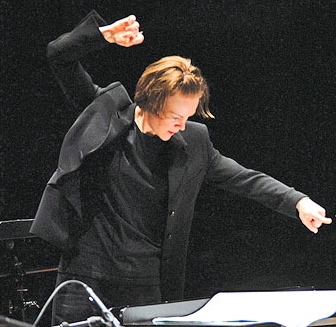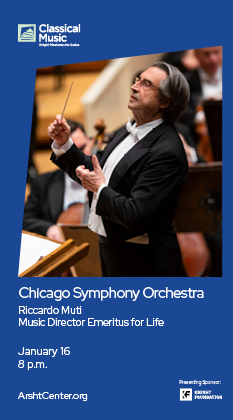Malkki, New World bring extraordinary focus to Finnish music

Conductor Susanna Malkki led the New World Symphony in music of (mostly) Finnish composers Saturday night.
The New World Symphony hit the Finnish theme hard in their marketing campaign for Saturday’s Sounds of the Times concert featuring music of Kaija Saariaho and Magnus Lindberg with the program wryly titled “The Finnish Line.” But what became clear as the concert progressed under the superb guidance of conductor Susanna Malkki, was that the real story didn’t center on the two Finns so much as on French composer Tristan Murail and his formative influence on them.
Murail was a student of Olivier Messiaen’s, learning much from that iconic figure’s envelope-pushing way with orchestral color. Later, he experimented with electronic and computer music at IRCAM, the Pierre Boulez-founded incubator for modernist composers. There he helped develop “spectral” music – which involves creating scores based on timbres of sound, often using electronics to play with timbral decay, fragmentation, overtones and transformations to and from noise.
Both Saariaho and Lindberg studied Murail’s developments at IRCAM (Saariaho eventually making Paris her home), and both of them incorporated a Messiaen-like approach to color along with a spectralist method of treating sound.
Murail’s thickly scored, aurally overwhelming Gondwana (taking its name from an Atlantis-like sunken city of Indian lore) re-imagines electronically manipulated timbres using only acoustic instruments, hauntingly conjuring what might be the sound of bells tolling underwater. In an Internet2 interview before the piece, Murail invoked Debussy’s Engulfed Cathedral Prelude as a parallel to Gondwana, which made sense––Murail’s polytonality and vividly imagistic writing are as reminiscent of Debussy as his layered scoring and complex blocks of sound are of Messiaen.
Those same influences apply to Kaija Saariaho’s Notes on Light. The 2007 cello concerto also mimicks computer-generated sounds with acoustic instruments, finding aural parallels for states of light––with movements bearing titles like “Transluscent, secret”, “On fire” and “Eclipse”, the last of those allowing the orchestra to eerily overpower and “eclipse” the cello. Moreover, she’s reinvented a traditional concerto’s call-and-response dialogue between solo instrument and orchestra to have the orchestra send back distorted, pitch-bent echoes in response to a tortured solo cello line.
Soloist Anssi Karttunen owned every scrape, squeak, growl and shudder of a work he played at the world-premiere and subsequently recorded. Her score asks the cello soloist to play at the very extremes of the instrument’s range and to treat deliberately brutish sounds with a searching eloquence. In a splendidly virtuosic turn, Karttunen accomplished that, and made what has got to be a workout sound like light labor.
Lindberg, not as otherworldly as Murail or febrile as Saariaho, is a master orchestrator who knows how to tease the ear and arrest attention, and his 1997 tone poem Feria brought the cheering audience to its feet. Sensual, rangy, often explosive in mood––the composer enjoys punctuating his thoughts with knockout punches of lower percussion––and shuttling continually between tonality and dissonance, the score has a field day with timbral fissions and fusions. In its kaleidoscopic modernism, it was Debussy’s Iberia, through a glass darkly.
None of this is easy music. But the Finnish conductor Susanna Malkki drew playing of extraordinary concentration and atmosphere from the New World’s young musicians, sculpting the air with sweeping gestures to round the tone of a unison note or to raise the temperature on a gradually massing tone-cluster. Malkki’s preparation with the orchestra was clearly scrupulous: None of the myriad aural effects called for by the composers sounded like laundry lists of offbeat challenges to be executed, but were invested with drama, an aura of mystery and more than a little metaphysical dimension. And those halos of overtones wafting off Murail’s thick, tolling chords were painstakingly calibrated to create the kind of uncannily bell-like sonorities so central to the soundscape he conceived.
But given all the neo-Impressionist touches and IRCAM-nurtured experimentation in these scores, was “The Finnish Line” really the right slogan? Perhaps they should have dubbed the concert, “Parisian Finnish-ing School.”
Joe Banno is an award-winning director in theatre, opera and film, based in the Washington, DC area. He has been a classical music critic for over twenty years, serving as a contributing reviewer to the Washington Post since 1993 and as opera critic for Washington City Paper from 1989 through 2007.
Posted in Performances
Leave a Comment
Mon Jan 25, 2010
at 11:15 am
No Comments






